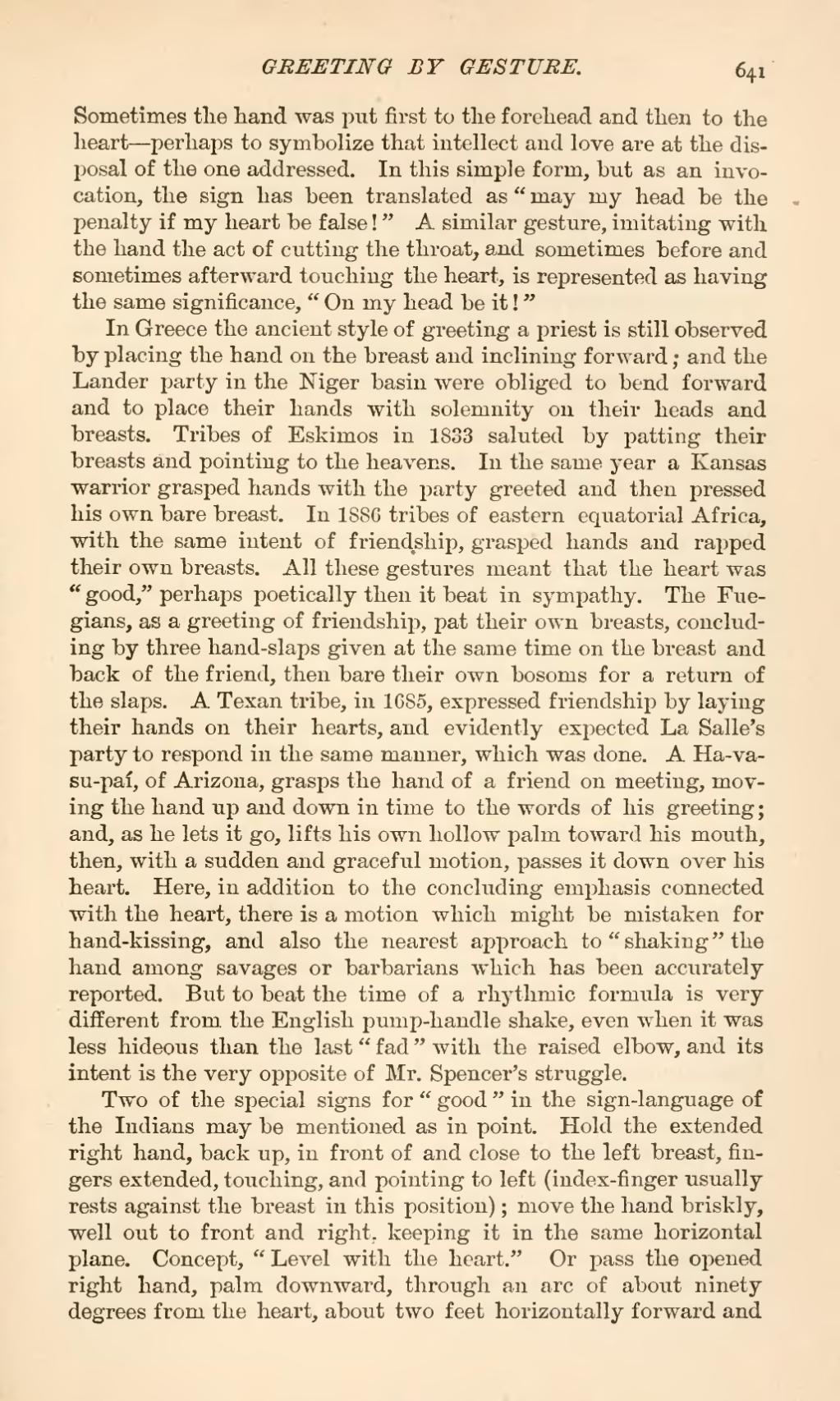Sometimes the hand was put first to the forehead and then to the heart—perhaps to symbolize that intellect and love are at the disposal of the one addressed. In this simple form, but as an invocation, the sign has been translated as "may my head be the penalty if my heart be false!" A similar gesture, imitating with the hand the act of cutting the throat, and sometimes before and sometimes afterward touching the heart, is represented as having the same significance, "On my head be it!"
In Greece the ancient style of greeting a priest is still observed by placing the hand on the breast and inclining forward; and the Lander party in the Niger basin were obliged to bend forward and to place their hands with solemnity on their heads and breasts. Tribes of Eskimos in 1833 saluted by patting their breasts and pointing to the heavens. In the same year a Kansas warrior grasped hands with the party greeted and then pressed his own bare breast. In 1886 tribes of eastern equatorial Africa, with the same intent of friendship, grasped hands and rapped their own breasts. All these gestures meant that the heart was "good," perhaps poetically then it beat in sympathy. The Fuegians, as a greeting of friendship, pat their own breasts, concluding by three hand-slaps given at the same time on the breast and back of the friend, then bare their own bosoms for a return of the slaps. A Texan tribe, in 1685, expressed friendship by laying their hands on their hearts, and evidently expected La Salle's party to respond in the same manner, which was done. A Ha-vasu-paí, of Arizona, grasps the hand of a friend on meeting, moving the hand up and down in time to the words of his greeting; and, as he lets it go, lifts his own hollow palm toward his mouth, then, with a sudden and graceful motion, passes it down over his heart. Here, in addition to the concluding emphasis connected with the heart, there is a motion which might be mistaken for hand-kissing, and also the nearest approach to "shaking" the hand among savages or barbarians which has been accurately reported. But to beat the time of a rhythmic formula is very different from the English pump-handle shake, even when it was less hideous than the last "fad" with the raised elbow, and its intent is the very opposite of Mr. Spencer's struggle.
Two of the special signs for "good" in the sign-language of the Indians may be mentioned as in point. Hold the extended right hand, back up, in front of and close to the left breast, fingers extended, touching, and pointing to left (index-finger usually rests against the breast in this position); move the hand briskly, well out to front and right, keeping it in the same horizontal plane. Concept, "Level with the heart." Or pass the opened right hand, palm downward, through an arc of about ninety degrees from the heart, about two feet horizontally forward and
